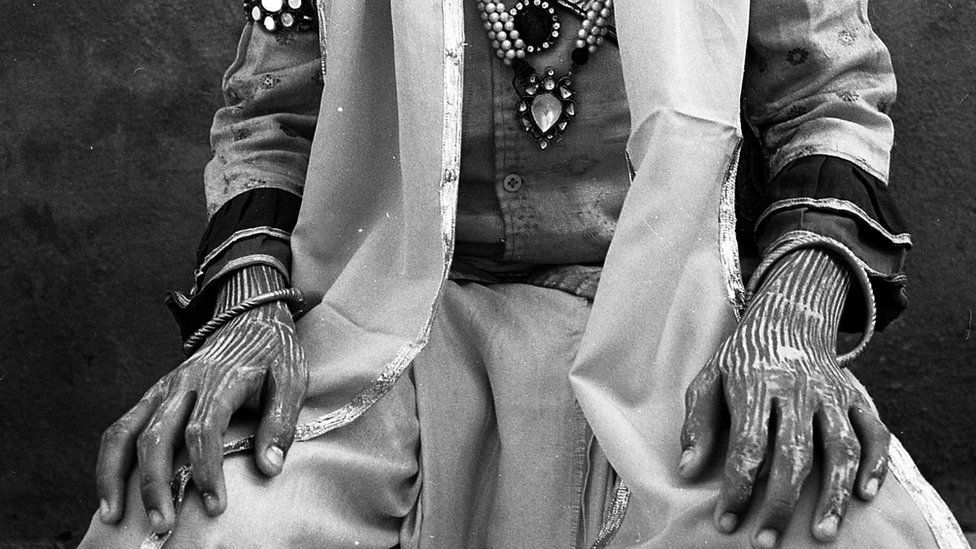Ramayana: Indian children playing god with royal patronage
- Published

For two months every year, five children in Ramnagar town in the northern Indian city of Varanasi don greasepaint and are dressed in silken robes to perform in the Ramlila festival, based on the Hindu religious epic Ramayana.
The dramatic folk re-enactment of Hindu god Ram's victory over the 10-headed demon king Ravana celebrates the triumph of good over evil.
The head of the former royal family of Varanasi selects the children to play Ram, his wife Sita and his three brothers, and the actors are handed over to a teacher to be trained for their performances.
Photographer Saibal Das went backstage to meet the children who play god.
Image source, Saibal Das
The Ramnagar Ramlila has a history of more than 500 years and it is still celebrated in the traditional way - without electric lights or a microphone to reach the audience.
Image source, Saibal Das
During their training and the show, the child actors are accommodated in a part of the Royal Guest House - but the building is now very old and dilapidated. Their teacher lives in another part of the guest house with his family.
Image source, Saibal Das
The head of the Varanasi royal family hosts the festival and goes to attend the Ramlila performance riding on an elephant hired for the event.
Image source, Saibal Das
In earlier times, some 40 children would apply for the five acting roles, but today there aren't many takers. Aloke Shukla, who goes out looking for actors to cast in the Ramlila, says today they are lucky if they get 10 to 15 applications.
Image source, Saibal Das
Most of the child actors are from poor families. Although they are given food rations by the royal family, they have to cook their own food. After morning rehearsals from 6 to 8am, the children go to their rooms to cook their meals. Sometimes parents or guardians drop by to help.
Image source, Saibal Das
Once they put on their makeup and wear their crowns, the actors are no longer addressed by their names. They are considered living gods and goddesses.
Image source, Saibal Das
Devotees and spectators offer them garlands, money and gifts. The money that is collected goes to the teacher.
Image source, Saibal Das
At the end of the season, each child is paid 3,500 rupees ($53; £35), and gifted a silver coin, a towel, a set of clothes, a bowl and a glass and a copy of the Ramayana, signed by the head of the royal family and carrying his seal.